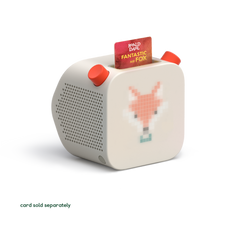Bedtime Routines that Work
Words by Samantha Weitzberg (RYCT, RYT)
So how do we as adults teach children good sleep habits?
The answer lies in the cuddles, stories, and songs they hear before drifting off. A bedtime routine can help children fall asleep, stay asleep, and wake up feeling rested.
"My work as an early childhood teacher (and now, a new mum to an infant) has taught me that young children learn best through hands-on experiences and with simple repetitive songs or chants. Simple songs can provide structure and narrate experiences to teach small children how to become observers of the world around them. That’s why if you walk into an early childhood classroom around clean-up time, you’ll hear a transitional song that goes through the steps and expectations of cleaning up!" Source: Samantha Weitzberg
The use of music during bedtime can help reframe the struggle many parents have in getting their children to sleep and participating in nighttime rituals. When there is a song to structure the schedule of events leading to bedtime, it becomes something in the child’s locus of control. Dr. George Kitsaras, Ph.D., emphasizes that common bedtime routines including brushing teeth, getting into cozy pajamas, taking a warm bath or shower, reading a story or two, and cuddling are relationship-building activities. More so, these positive interactions between parent and child are bonding opportunities that increase a child’s social and emotional and prosocial development.
Ways to Create a Healthy Bedtime Routine for Kids
Consistent Bedtime
A consistent bedtime begins with prioritizing an actual time to go to bed. First, think about the developmentally appropriate number of hours your child needs based on age and at what time your child needs to be awake. For example, the time it would take to be up for breakfast, to get ready for school, and then leave the house for school.
Create a Fun, Yet Relaxing Routine
Once a time is established, choose a few strategies as listed above (warm bath, reading or listening to a story, etc.) that work best for you and your family. These strategies can provide clues for children to learn their own sleepy cues and thus help them transition from play or mealtime to rest.
Why are Routines Important for Kids?
Rituals for children are important because they allow children to develop a sense of trust and autonomy within their day-to-day lives. As parents, it is also important to use visuals and tools, such as music to support your child in adhering to the terms surrounding the bedtime routine.
When starting a new bedtime routine think of the simple rituals that you are already doing that lead up to your child falling asleep. These are things that they may already associate with bedtime, such as changing into pajamas and washing up in the bathroom. When preparing for bedtime, think about the bedroom environment. What does it look and feel like? Is it quiet? Consider playing quiet music, dimming the lights or turning on a night light while preparing your child to get into bed. These changes will guide your child to anticipate sleep and expect that getting ready for bed means play, meals, and the day itself is coming to an end.
As your bedtime routine becomes solidified into your child’s daily life, the benefits of a healthy sleep routine including improved memory, attention, executive functioning, and mood, will become evident.
With our newest Moshi cards, the bedtime structure can be playful and less stressful for both you and your child. Find out more on our dedicated sleep page and discover stories, music, and meditation cards in the Yoto Card Store for a good night's sleep.
Got a question or a suggestion? Get in touch.
Samantha Weitzberg, RYCT, RYT, is an early childhood teacher, yoga instructor, and mindfulness leader living in New York. She is also a first-time mum to a baby boy.



